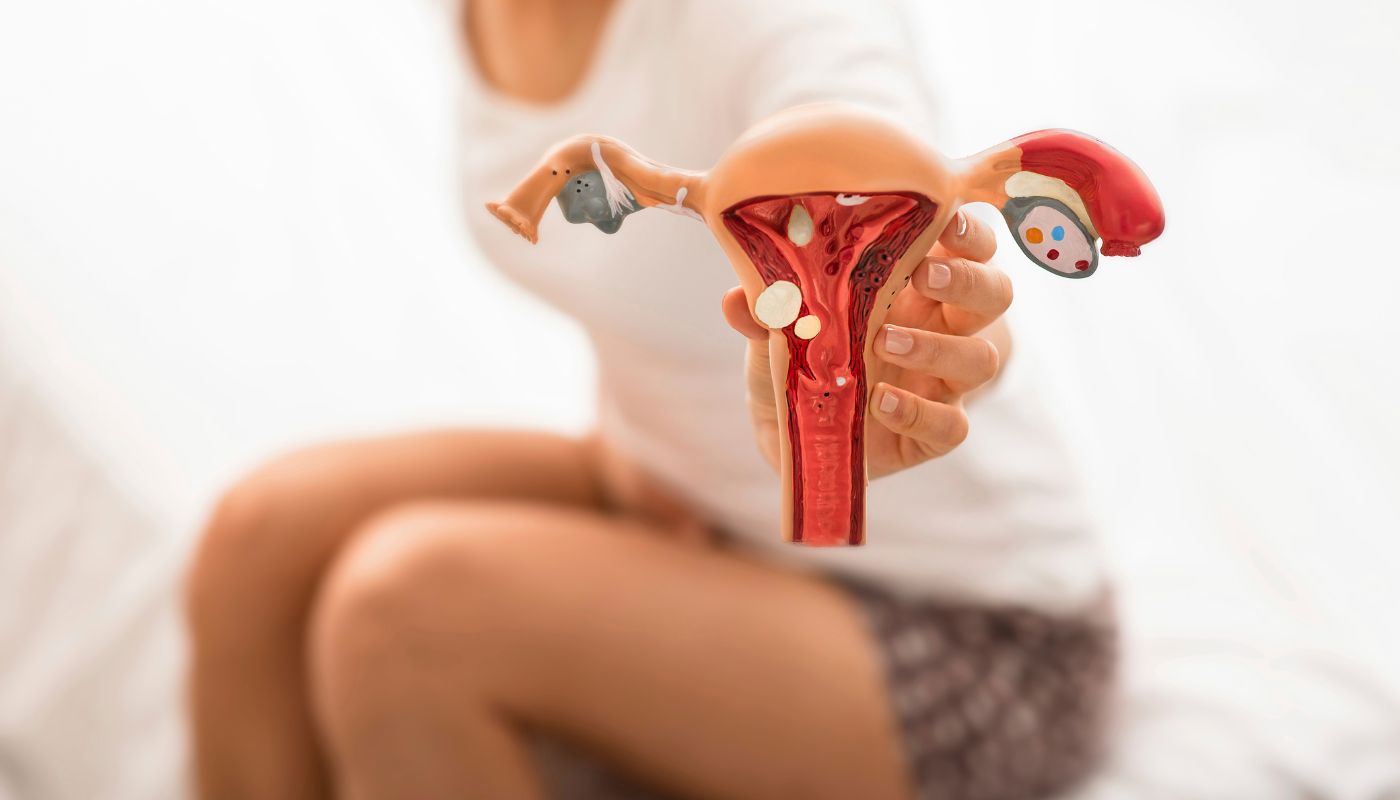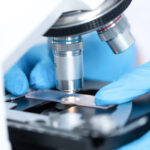What are the methods to prevent chocolate cysts?

İçindekiler
ToggleIn people of reproductive age who continue to menstruate, the inner layer of the uterus thickens regularly every month depending on the menstrual cycle and becomes ready for the embryo to settle. If the egg cells released by the ovaries do not cause any pregnancy and are not fertilized, the cells in the inner layer of the uterus are shed from the body in the form of bleeding at certain periods. If there are no hormonal problems, this process continues regularly every month until pregnancy occurs.
In some cases, normal bleeding during menstruation may flow into the uterus instead of outside the uterus due to different reasons. In such a case , endometriosis may occur. While blood flow is provided to the uterus, blood cells may settle in the areas where blood passes. Endometriosis occurs when these cells located in the inner layer of the uterus settle in a different area. This disease, which causes the formation of chocolate cysts, which are more common especially in the ovaries, paves the way for the formation of various hormonal diseases . Cysts that occur as a result of endometrial cells settling in an area other than the uterus are called chocolate cysts. Since the inside of the cysts is filled with bloody fluid as a result of menstrual bleeding, the cyst color is chocolate.
Why Does Endometriosis Occur?
Endometriosis occurs when endometrial cells settle in the ovaries, back wall of the uterus or abdominal cavity due to irregular menstrual bleeding and various functional disorders. When the cells in the uterus settle in another area, the endometrial cells continue their function. Since this will cause a functional disorder, the existing bleeding remains in the cyst. Over time, cysts filled with bloody fluid cause adhesions between the tissues. Since the adhesions formed due to the disease will create anatomical disorders, people may experience various pains and problems with not being able to conceive. Although the cause of the formation of chocolate cysts cannot be fully explained, the most accurate diagnosis is genetic structure and hormonal disorders caused by first-degree kinship.
Since endometriosis prevents pregnancy, it must be treated before it progresses. In the disease where many different methods are used for treatment, the method is determined according to the stages of the disease. Since the diameter of the chocolate cyst is minimal in stages 1 and 2, the disease is controlled with various drug treatments and the cyst is prevented from growing. In stage 3, which is called the middle stage, adhesions become advanced. Organs that should perform their functions regularly cannot perform their functions and functional disorders begin to occur. The adhesions that form can cause patients to experience various pains. The last stage, stage 4, is the most dangerous and difficult stage of endometriosis. High-degree adhesions form in the areas where the disease is located and chocolate cysts form. Intense tissue adhesions are observed in this stage. Tissue adhesions cause problems in the ovaries, blockage of the tubes and, as a result, infertility problems.
If the disease is present, laparoscopy must be performed to determine the size and stage of the chocolate cysts.
What are the symptoms of chocolate cyst?
Chocolate cysts, which develop due to endometriosis, show themselves with various symptoms. However, the existing symptoms do not show themselves at the same level and intensity in every patient. The biggest symptom of cyst formation is intense and severe pain experienced during menstrual periods and sexual intercourse. Pain can be experienced a few days before menstruation. The intensity of the pain experienced does not provide information about the existing diameter of the cyst and is not relevant. While patients with small-sized cysts may experience intense pain during menstruation, patients with large-sized and widespread cysts may experience mild groin pain during their menstrual periods.
Chocolate cysts that form do not cause heavy menstrual bleeding, instead one of the biggest indicators of endometriosis is dark brown discharge experienced before and after menstruation. Dark color of discharge, heavy discharge and smelly discharge can be shown among the existing symptoms of the disease. Another symptom that shows the presence of the disease is pain experienced during sexual intercourse. Pain is not experienced in the vagina during intercourse, instead pain is observed deeper in the lower abdomen and groin. The vast majority of patients with chocolate cysts see a doctor with the problem of not being able to conceive. The reason for the problem of not being able to conceive, which is one of the biggest symptoms of the disease, is the adhesion that occurs in the tissues. Other reasons for infertility are; the cyst negatively affects the existing development of the embriyos , prevents the embryo from fertilizing in the inner part of the uterus, causes the ovulation function to fail and affects the quality of the sperm.
Other complaints seen with chocolate cysts are; groin pain, pain in the lower abdomen and ovaries , severe pain in the waist, legs and back, joint pain, nausea experienced on an empty or full stomach, vomiting, periodic abdominal pain, constipation, diarrhea, severe pain radiating to the anus, burning sensation in the cervix or uterus during urination, painful urination, bloody urine or stool, the need to urinate frequently at all hours of the day and nosebleeds.
Is it possible to protect yourself from chocolate cysts with herbal methods?
In order to be protected from chocolate cysts, which are the most common type of endometriosis, it is important to apply the right methods and treatment methods in the early stages of the disease. It is not possible for chocolate cysts to form widely in the 1st and 2nd stages of endometriosis . Therefore, adhesions formed in the early stages should be prevented and their spread should be prevented as much as possible. Chocolate cysts can be destroyed by drug treatment if they are smaller than 3 cm. However, surgical operations are mandatory for large cysts.
Although it is thought that chocolate cysts are prevented and treated with various herbal methods based on some statements, this is an unfounded prediction. There is no definite information about the methods of protection from chocolate cysts . Various methods are produced by some people depending on alternative medicine. Although the onion cure treatment recommended to women with chocolate cysts among the public is not harmful, it has not been determined for sure whether it has any benefit for the disease. Therefore, it is important for patients diagnosed with chocolate cysts to definitely prefer treatment methods based on modern medicine by applying the right methods and to recover accordingly.
What Should Be Done To Prevent The Formation Of Chocolate Cyst?
There is no current method yet to be determined to protect against Endometriosis, a disease that can be seen in all women of reproductive age, regardless of age. However, it has been determined that pregnancy and menopause prevent the disease from occurring. In women who give birth, the disease regresses and treatment becomes easier.
Early diagnosis and early treatment are very important to prevent the formation of chocolate cysts in endometriosis. Since cysts mostly occur in the advanced stages of the disease, the adhesions that form should be intervened as early as possible. Functional disorders that occur over time when the endometrium cells located in the inner layer of the uterus settle in the ovaries or the back wall of the uterus pave the way for the formation of cysts. When the existing residues are cleaned and the damaged anatomical structure is returned to normal before the formation of chocolate cysts, the formation of cysts or their further growth in size can be prevented.
What Should Be Done To Prevent Chocolate Cyst From Progressing?
Endometriosis disease consists of 4 separate stages. The stages are determined by examining the lesions that form. Since the disease is not at a significant stage in stage 1 and stage 2, it can be controlled with various drug treatments. Since these stages are called innocent stages, patients do not need to be kept under intensive surveillance. Stage 3 is called the middle stage. Since patients are a little closer to the dangerous stage in this stage, various methods are applied to regress the disease. In stage 4, since large-scale chocolate cysts are formed in addition to the widespread lesions, surgical treatments should be applied in addition to the drug treatment.
Birth control pills containing estrogen and progesterone can be used to treat cysts that are 3 cm in size to prevent the cyst from progressing. The birth control pills used help to reduce the size of the cyst and relieve the pain with the estrogen they contain. Before determining the treatment method to be applied, criteria such as whether the patient has given birth before, age range and whether or not she is considering having children should be taken into consideration. Apart from all these, surgical treatment and drug treatment are applied simultaneously in combined treatment methods applied according to the patient’s condition.






